QuestionQUESTION: Hi Dr. Conner,
My wife and I rescued a 3 year old male Collie in October to add to our female Collie we've had as a pup. This is my first rescued dog and things have been going good, but it has been a challenge. When we got him I noticed he had no training, no boundaries (no understanding of "no", "off", etc.). We've been working with both dogs consistently as we are also preparing for our first child. In the months that we've had him he will sit a lay down on command and stay in both positions (even at the dog park-not great but definitely good). He knows to wait until we are off stairs before he comes down, he's not to jump on our bed or couches unless he's invited (which is very rare). He has become great on a leash...except for when someone rides by on a bike. When this happens he barks like crazy, lunges, whines. The best I can do is turn around and walk away but that means every time a bike comes by this happens and I have to turn around. We've had dog "trainers" (police and search and rescue trainers), they don't believe he is aggressive (he got off leash once and chanced two bikers, they stopped and he ran up to them to say hello). It seems like a strong herding instinct that has never been corrected or controlled. In all other instances he's is great with people, dogs, children. He likes to chance my cat but stops when I tell him, he'll bark when someone knocks or rings the door bell, but stops why I tell him. He sits and waits until I invite him to meet our guest, he sits and waits before we go on walks, or eat his food. I really have no interest in a shock collar, what can I do to help him calm down when bikes approach. Any help would be greatly appreciated! I should also say he is 95 lbs plus, in great shape though (vet) and I'm very concerned for my wife when she walks him cause he will pull her down when going after bikes. One thought I've had is having a friend ride a bike around our common area (we live in a condo) and try to desensitize him that way, but not sure if this is the best approach or if it could do more harm than good. Thanks!
ANSWER: This is a NORMAL response probably the result of startle effect, lack of socialization, or simply a "control" aspect of behavior and is very COMMON in many dogs, not just herding breeds. There is NO aggression intended. The dog does not present in any manner (from your description) that suggests a tendency toward fear aggression. Quick movement also provokes prey drive in herding breeds, so we'll treat this as a prey drive related behavior.
Flooding a dog (introducing the object of prey drive) is NOT the answer, NOR is ANY aversive technique (especially a shock collar!) First: teach attention, as found below
http://www.youtube.com/watch?v=g8dC8-U1BT4&feature=more_related
This must be done in environment where there are few distractions and then slowly in areas with more visual stimulation (BUT NOT bicycles or skateboards). The dog will learn that WATCHING YOU and SITTING earns high value reward (not dog treats: cheese, hot dog bits, etc.) While you're doing this, in separate event teach "to me". Use a whistle at lowest level of sound OR a word (as suggested below: PRESTO). In this circumstance, I prefer the whistle since the dog will alert to it more quickly outdoors in the presence of fast moving stimuli:
Choose a word that you and no one is your family EVER uses. DO NOT use "come"...that word has very little meaning to your dog at this point, since he's basically been taught to ignore it. For our purpose here, we will use the word "PRESTO."
Using a TREAT (something your dog really, really wants), walk up to the dog, stand directly in front of him, say "presto", pop treat in dog's mouth. Repeat this twice more. Now take a few steps backward. Your dog will come toward you (almost all of them do if he doesn't, repeat the first step three more times.) AS he comes toward you, say "Presto" and pop the treat in his mouth. What you are doing is associating the word with the ACTION and offering the treat when the dog is IN FRONT OF YOU. Repeat this twice more, end session. Later in the day, repeat the above scenario again. Do this twice a day (for short intervals) three days in a row.
On the fourth day, catch your dog's eye and say "Presto". Don't be more than a few feet away. Give the dog three or four seconds to process what's happening. He should come towards you. If he does not, WALK OUT OF THE ROOM, count to ten, go back INTO the room and start from Square One (as if teaching it from the beginning.) What you're doing is building a conditioned response to the word "Presto" which involves the dog coming TOWARD you and receiving a treat while standing STILL in front of you. It takes up to 60 repetitions to get a strong conditioned response. Once you have ten out of ten successful trials (dog always comes toward you when you say "Presto" and you always give him the treat once he's reached you), you can begin to play "recall" games inside the house. (Do NOT take this routine OUTSIDE where there are far too many distractions until your dog is ROCK SOLID INSIDE, and this might take several weeks.) To play this game, you can begin by saying "Presto" from the next room, but don't confuse the dog too much, make it easy for him. You can then make it a bit more difficult and increase the value of the TREAT (this is called "jackpotting") when the dog finds you in another room. This makes "work" fun for the dog and for you, turning your training sessions into something upbeat. The last step is taking PRESTO outside. A confined area (fenced in) is ALWAYS mandatory. You've taught the dog to come toyou when called WITHOUT A LEASH, let's try to keep it that way. A Leash is ALWAYS "psychological restraint" to a dog...he knows you're in control. When the dog comes to you from his free choice, he's making a DECISION. This is long term memory in the making.
Repeat your recall exercises at least once or twice a week for several months. Make the REWARD interesting and varied and NEVER, EVER use the word "presto" (or whatever other recall word you have) for anything ELSE other than recall work.
The whistle (or word) is the recall cue. The herding breeds are especially tuned to responding to such management when prey drive is elicited but it's not a MAGIC FORMULA. You must WATCH THE DOG when you see stimulus approaching and CATCH HIM before prey drive is elicited. Be sure his response is very rewarded. IF HE DOES NOT RESPOND, go to the end of the leash and turn your back on him. YOUR reaction to HIS reaction may be complicating matters. He WILL stop responding to the stimulus and LOOK for you, remembering his "attention" exercises. The MOMENT he turns to you, blow the whistle (or use PRESTO) and then heavily reward him when he reaches you, circle him left, then circle right (this changes brain wave patterns and prevents prey drive from re-engaging), ask for "sit", reward and move on.
---------- FOLLOW-UP ----------
QUESTION: Thank you Dr. Conner!
I think I have a pretty good understanding of everything you said. I do want to clarify your last paragraph though so I get this right. Can you clarify the part- If he does not respond, go to the end of the leash and turn your back on him. By end of the leash do you mean away from him? So he would need to turn and come towards me?
Thanks for your help,
AnswerYes, go to the end of the leash and turn your back on the dog. This accomplishes two things:
It removes any contribution you are making (by reaction or otherwise) to the dog's behavior; and
It immediately encourages the dog to seek the most rewarding behavior: recall for reward.
It's important to observe the dog's body language so as to truncate his automatic reaction (should a stimulus suddenly make an appearance.) Once the dog is engaged in full blown reaction it's difficult to get his attention. Going to the end of the leash is one way to redirect him once he is firmly established in the recall/attention experience.
Collies her children, also. Your dog will most likely begin to follow your child around (once s/he is crawling, walking) etc., so a strong signal of redirection for reward is important.

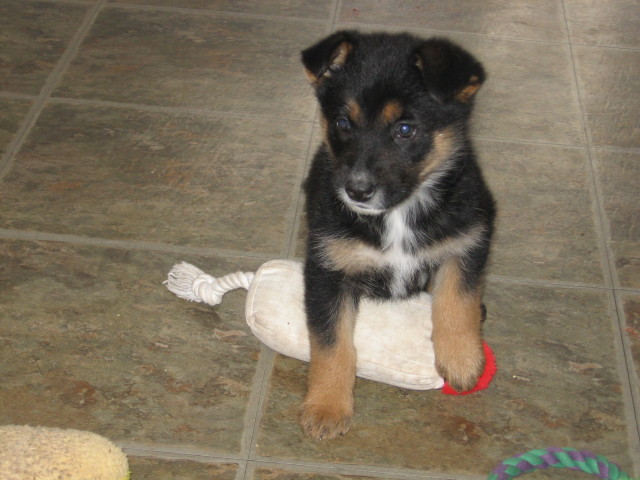 puppy problems
QuestionQUESTION: I am the proud owner of 2 german shep
puppy problems
QuestionQUESTION: I am the proud owner of 2 german shep
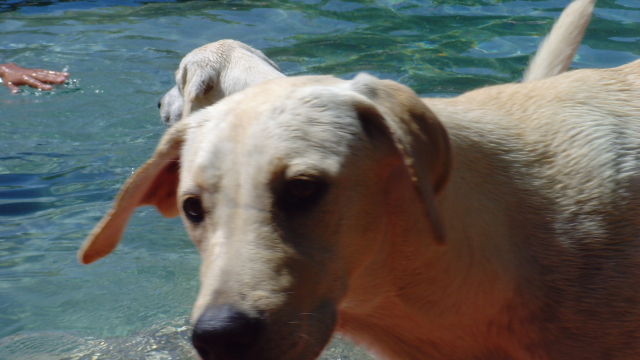 Psychological trauma
Question
Izzy
I recently took my 1 year old dog to a fr
Psychological trauma
Question
Izzy
I recently took my 1 year old dog to a fr
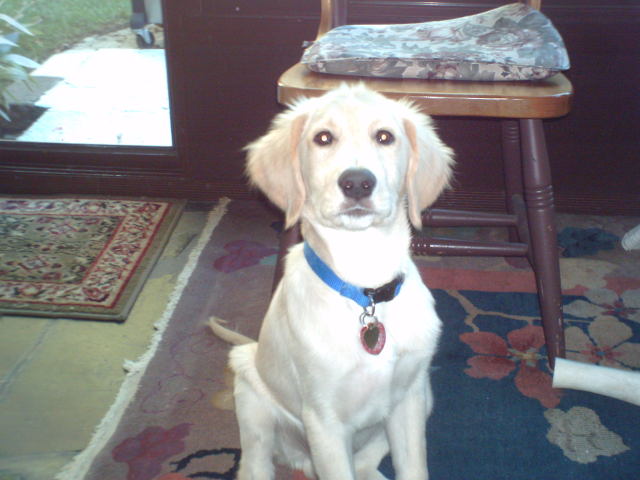 my 7 month old golden changed for the worse
QuestionRiley at 6 months
QUESTION: I got a gold
my 7 month old golden changed for the worse
QuestionRiley at 6 months
QUESTION: I got a gold
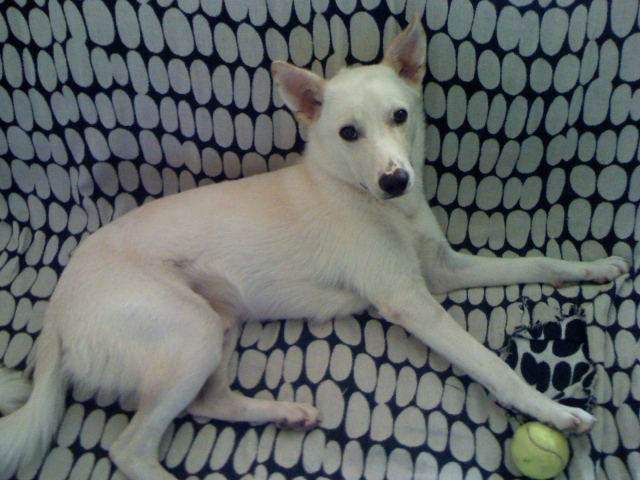 Dog walking problems
Question
Snickers
I have been trying to train my dog SN
Dog walking problems
Question
Snickers
I have been trying to train my dog SN
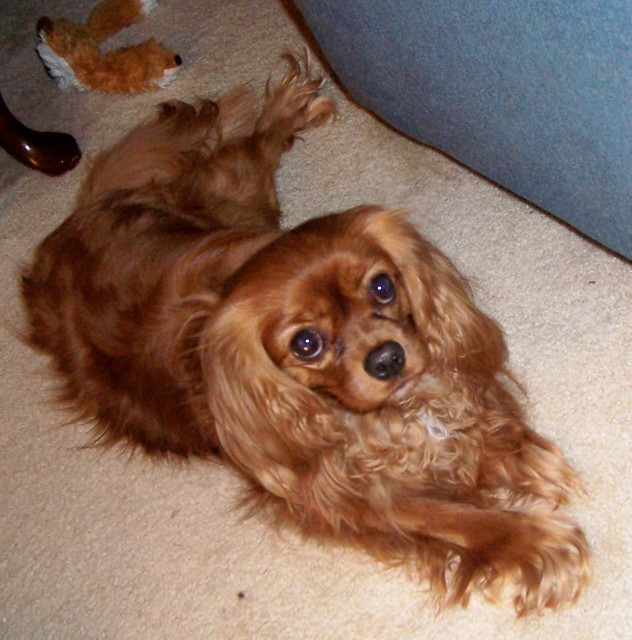 Dog light and shadow chasing
Question
Jenni
My 3 year old Cavalier King Charles Span
Dog light and shadow chasing
Question
Jenni
My 3 year old Cavalier King Charles Span